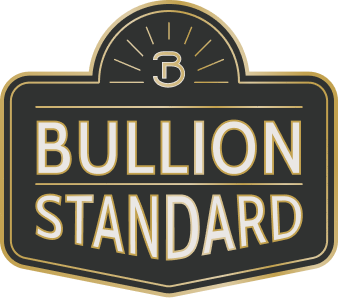China’s influence on the global gold market has reached unprecedented levels. As the world’s largest consumer and importer of gold, China’s market behavior can shift global bullion prices almost instantly. In 2024 alone, China purchased over 200 tonnes of gold for its reserves, and by April 2025, gold imports surged 40% month-over-month to 112 tonnes, underscoring the country’s relentless appetite for the metal.
This guide breaks down China bullion demand, the driving forces behind it, and how those shifts ripple through gold prices worldwide. Whether you’re holding physical bars or trading ETFs, understanding China’s gold market movements is key to making informed investment decisions in today’s volatile market.
Key Takeaways
- As the top importer and consumer of gold, China’s buying or selling decisions can instantly move global bullion prices.
- Gold imports increased by 40% month-over-month, while SGE withdrawals and ETF outflows declined, indicating a shift in short-term sentiment.
- The People’s Bank of China has purchased gold for 18 consecutive months, adding over 200 tonnes since 2024 to reduce its reliance on the U.S. dollar.
- China holds about 40% of global open interest in gold. Its actions during Asian trading hours often trigger price swings in New York and London.
- Tools like BullionVault, Bullion Standard, YouHodler, and CoinPayments enable investors to react quickly to shifts in the China-driven gold market.
China’s Bullion Demand

Source: Canva Pro
China remains the single largest influence on global gold demand today. Whether it’s retail investors buying physical bars, institutions trading futures on the Shanghai Futures Exchange (SHFE), or the People’s Bank of China (PBOC) steadily adding to its reserves, the country’s actions ripple across the global bullion market.
April 2025 highlighted the volatile nature of this demand. After a record-breaking March driven by “gold fever” among Chinese investors, both gold imports and withdrawals from the Shanghai Gold Exchange (SGE) revealed mixed signals, suggesting that while long-term fundamentals remain strong, short-term sentiment may be shifting.
SGE Withdrawals & Gold Imports

Source: Canva Pro
Digging deeper into the supply channels, recent gold import and Shanghai exchange data from April 2025 highlight just how complex China’s demand story has become. While imports surged, key signals like SGE withdrawals showed a surprising pullback, raising questions about short-term sentiment.
1. April: 112 Tonnes Imported vs. March’s 80t (WGC)
According to the World Gold Council, China imported 112 tonnes of gold in April 2025—up sharply from March’s 80 tonnes. This 40% increase reinforces the narrative that China continues to seek bullion even amid price pullbacks.
2. SGE Withdrawals Down 35% M/M — Signs of Cooling Demand?
While imports surged, SGE withdrawals—a strong proxy for wholesale physical demand—fell by 35% month-on-month in April. This decline follows record high withdrawals in March and may reflect temporary exhaustion in retail appetite after the sharp rally to $3,500/oz.
This divergence between imports and withdrawals signals a nuanced shift: China is still stocking up, but the pace of retail and institutional transactions may be slowing as investors wait for more stable price levels.
Gold ETF Flows

Source: Canva Pro
Alongside physical demand, another crucial piece of the puzzle lies in China’s ETF markets. April’s abrupt reversal in ETF flows reveals how retail traders and institutions are reacting to price swings—and how this behavior differs from physical market signals.
1. ¥3.3B Outflows in April After Record Inflows — Volatility or Sector Rotation?
Gold-backed ETFs listed in China experienced ¥3.3 billion in net outflows in April, just weeks after setting records for monthly inflows during the March rally. Analysts believe this swing reflects short-term profit-taking and market-wide rotation out of gold into other sectors following the US-China trade standoff.
Investors who bought into the rally early likely cashed out at peak levels around $3,500, prompting a sharp ETF selloff. However, this also highlights a more speculative component of Chinese gold demand—a sharp contrast to the strategic accumulation seen from central banks.
2. Comparison with Global ETF Trends
Globally, gold ETFs remained relatively stable. Western funds experienced minor inflows as inflation expectations rose again in the US, while European ETFs remained largely unchanged. China’s ETF volatility, therefore, appears more sentiment-driven and isolated, rather than being part of a broader global trend.
PBOC Gold Purchases

Source: Canva Pro
Beyond retail and ETF activity, the People’s Bank of China plays a steady, long-term role in shaping global gold flows. Even as short-term sentiment fluctuates, central bank demand continues to provide a strong foundation for global pricing.
1. 18th Consecutive Month of Accumulation (1.9t in May)
The People’s Bank of China purchased 1.9 tonnes of gold in May 2025, marking its 18th consecutive month of bullion buying. While modest in size, the consistency of these monthly purchases signals long-term intent: diversifying away from the US dollar and hedging against geopolitical instability.
2. Total 2024–2025: Over 200t — Consistent Strategic Demand
Since the start of 2024, China has added over 200 tonnes of gold to its reserves. This positions the PBOC among the most aggressive central bank buyers globally. Unlike the more reactive behavior of retail and ETF investors, central bank buying underscores China’s strategic objective of strengthening the yuan and stabilizing reserves amid rising tensions with the US.
This silent but powerful trend adds a foundational layer to China’s total gold demand—one that supports prices even when retail or ETF sentiment cools.
Retail vs. Institutional Behavior in China’s Gold Market

Source: Canva Pro
This divergence in behavior between central banks, ETFs, and individual investors reveals deeper insights into China’s internal gold market psychology. April’s trading activity shows how quickly speculative demand can shift—and how media and market narratives shape those moves.
1. Speculative Unwinding: April 22–28 Sell-off
- 1 million oz liquidated on SGE (Zadeh)
- 83% of positions reversed within days — momentum-driven behavior
2. ETF Reversals & Trading Psychology
- Huan Wu Bera and Gold Thai ETFs see $1.2B inflows, followed by $900M outflows
- What this says about investor sentiment
3. China’s “Gold Fever” in Media and Markets
- Retail frenzy vs. smart money dynamics (BullionVault)
- Labor Day patterns & calendar-driven positioning
How China’s Gold Market Moves Impact Global Prices

Source: Canva Pro
What happens in Shanghai doesn’t stay in Shanghai. China’s large share of global trading volume means its moves often dictate pricing across New York and London. Let’s explore how its activity ripples outward, especially during key trading hours and holidays.
1. China’s 40% Share of Global Open Interest
One of the clearest indicators of China’s dominant role is its commanding share of global open interest in gold futures and contracts. This concentration of trading power explains why even small shifts in Chinese demand or sentiment often spark global price reactions.
- China holds approximately 40% of global open interest in gold, giving it outsized influence on price movements.
- Large-scale buying or selling by Chinese institutions, especially on the Shanghai Gold Exchange (SGE) and Shanghai Futures Exchange (SHFE), triggers automated reactions in global markets, particularly in New York and London.
- Algorithmic trading systems detect volume spikes and momentum shifts, amplifying the impact of China’s market activity well beyond its borders.
2. Volatility During Asian Hours (6 PM EST)
The impact of China’s market influence is especially visible during the early hours of the Asian trading session. These price-setting windows, beginning Sunday evening in the U.S., have become critical moments where sentiment, news, and speculative flows often collide, setting the tone for the week.
- Early Asian trading sessions, which begin at 6 PM Eastern Time on Sunday, are increasingly important price-setting windows.
- According to John Zadeh, opening price gaps over 0.8% at 6 PM EST predict the week’s trend 73% of the time.
- These gaps often reflect weekend news, pre-market Chinese positioning, or speculative flows.
- Thin liquidity during this time exaggerates moves, making the Asian open a key volatility window for global gold prices.
3. Holiday Shutdowns and Liquidity Crises
Adding another layer of complexity, Chinese market closures can distort normal trading dynamics worldwide. When liquidity dries up due to national holidays, the absence of China’s usual buying or selling can exaggerate moves in Western markets, leading to unpredictable volatility.
- When China’s markets close for holidays—such as Labor Day (May 1st)—global liquidity can contract sharply.
- During the April 2025 Labor Day break, both SGE and SHFE were closed, coinciding with a $200 drop in gold prices, as reported by BullionVault.
- Pre-holiday liquidation by Chinese traders thinned out the market, and Western trading sessions lacked the normal Asian support, leading to volatility spikes.
- These closures often align with portfolio rebalancing or strategic selling, making them high-risk, high-opportunity windows for global investors.
US Economy, Trade Tensions & Market Psychology

Source: Canva Pro
China may be the epicenter, but external factors—like U.S. economic data and trade tensions—also influence how its gold demand impacts global prices. Understanding this broader context helps investors anticipate market reactions with greater precision.
1. Weak US Economic Data Fuels Gold Sensitivity
One of the most consistent external triggers for gold volatility is weak economic performance in the U.S. When data points signal slowing growth or persistent inflation, gold often becomes a go-to defensive asset.
- The U.S. economy contracted by 0.3% annualized in Q1 2025, according to the Bureau of Economic Analysis.
- GDP price inflation hit 3.7%, pressuring real yields and driving defensive flows into gold.
- ADP Payrolls data also showed jobs growth sinking to its lowest level since July, missing Wall Street estimates by nearly 60%.
- In this environment, gold remains highly sensitive to weak macro indicators and inflation surprises.
2. Trade Tensions and “Haven” Dynamics
Beyond economic data, geopolitical flashpoints—like U.S.-China trade tensions—regularly drive gold flows. Tariffs, sanctions, and license restrictions can trigger strong haven demand, fueling short-term price spikes.
- President Trump’s April reintroduction of heavy tariffs on Chinese imports created a short-lived rally, with gold spiking to $3,500 before retracing.
- Historically, gold prices:
- Rise ~22% during periods of tariff escalations
- Fall ~10% during détente or easing
- Market players are watching US-China trade licenses and tariff announcements as real-time signals for gold’s next move.
3. China’s Economic Data Shifts Portfolio Behavior
Interestingly, gold doesn’t just respond to stress. Signs of strength in China’s economy can redirect investor interest toward industrial metals, changing the composition of portfolios, and gold’s relative appeal.
- China’s manufacturing PMI rebounded to 52.1, indicating a shift in capital flows toward base metals like copper (+3.1%) and nickel (+5.4%).
- With 65% of Chinese gold demand investment-driven, any shift in domestic macro data or capital control policies can prompt abrupt repositioning in gold-related instruments.
4. Market Psychology and Sentiment Signals
Even in the absence of hard data, market sentiment tells its own story. Tracking investor mood and behavioral signals can offer early warnings of shifts in gold positioning, especially during times of global uncertainty.
- The CNN Fear & Greed Index recently shifted from “Extreme Fear” to “Neutral,” reflecting reduced panic-based gold buying.
- This softening sentiment also aligns with ETF outflows in China and speculative unwinding on the SGE.
- Still, long-term institutional allocations remain intact, supported by ongoing central bank buying and gold’s strategic role as a hedge against geopolitical risk and fiat currency devaluation.
What Silver, Platinum & Palladium Are Telling Us

Source: Canva Pro
While gold remains the focus, investors shouldn’t ignore the signals coming from other precious metals. Silver, platinum, and palladium often reflect underlying shifts in demand and industrial activity that can either reinforce or contradict the gold narrative.
1. Silver Holding Up Better Than Gold
Among the precious metals, silver is quietly showing resilience. Its performance relative to gold—and its growing industrial role—offers a bullish signal that can’t be ignored by traders watching metal ratios.
- Gold fell 1.6%, while silver dropped only 0.7%.
- Silver’s industrial use, especially in solar panels (demand up 18%), is helping support its price.
- The gold/silver ratio narrowed from 85 to 80, suggesting silver is gaining strength.
- Traders may see opportunities in pairs trading or rotating into silver.
2. Platinum and Palladium Continue to Slide
On the other hand, platinum and palladium are struggling under the weight of weaker Chinese demand. Their downturn highlights how broader industrial weakness may contrast with gold’s defensive appeal.
- Both metals are under pressure due to weaker industrial demand from China.
- The slowdown is weighing on the auto and electronics sectors, which rely on these metals.
- Investors may reduce exposure to platinum and palladium while focusing on gold and silver for stability and potential growth.
Key Technical Levels and Indicators to Watch

Source: Canva Pro
Whether you’re trading or investing long-term, technical levels offer vital clues about where gold is headed next. Let’s break down the current resistance and support zones, and what the data is telling us about momentum and conviction.
1. Support and Resistance Zones
Let’s begin with the foundation: support and resistance. These key levels act as psychological markers and often determine whether price action accelerates, stalls, or reverses.
- Support:
- $3,000 – Psychological level and strong buying interest
- $2,900 – 2015 high and historical support
- $3,100 – 200-day moving average
- $3,020 – Fibonacci 38.2% retracement level
- Resistance:
- $3,300 – Needs a daily close above to break the bearish trend
- $3,500 – Next major resistance if momentum returns
2. Asian Market Open Patterns
Next, consider how weekly trends often begin. The opening of Asian markets—especially Sunday evening in the U.S.—can set the tone for what’s ahead.
- Watch Sunday 6 PM EST openings — gaps over 0.8% often set the tone for the week.
- April 28’s 1.2% gap down correctly signaled ongoing sell pressure (Zadeh).
3. Volume Confirmation Signals
But price movement alone isn’t enough. Volume gives us insight into conviction. Here’s how recent trading volumes—especially out of China—are confirming or contradicting price trends.
- Shanghai Gold Exchange (SGE) volume spikes confirm market conviction.
- The recent 1 million oz liquidation marked strong bearish momentum.
- Low-volume rallies are typically weak and prone to reversals.
4. Momentum and Trend Indicators
Finally, zooming in on the technical indicators like MACD and RSI helps identify potential trend reversals or continuation phases. These tools can guide entry and exit points in volatile gold environments.
- Monitor MACD crossovers and RSI levels for short-term momentum shifts.
- A MACD crossover above the signal line near $3,250 could suggest a recovery phase.
- VWAP (Volume Weighted Average Price) below $3,250 still supports downside risk.
Investment Tricks for a Volatile China-Driven Market

Source: Canva Pro
With so many moving parts—from ETF reversals to central bank buying—navigating gold’s volatility requires a thoughtful, diversified approach. Here are some actionable strategies to stay ahead, reduce risk, and capture long-term upside in a market shaped by China’s decisions.
1. Buy During Dips with Dollar-Cost Averaging
One proven way to manage volatility is by taking advantage of price pullbacks. Dollar-cost averaging helps investors build positions without needing perfect timing.
- Historically, 5%+ pullbacks have produced 14% annualized returns since 2000.
- The recent $3,200 level presents a potential accumulation zone for long-term investors.
- Spreads investment risk over time and avoids poor market timing.
2. Watch for Technical Confirmation Before Entering ETFs
Before jumping into gold ETFs—especially in a momentum-driven market like China’s—wait for technical signals that suggest strength and stability.
- Look for indicators like MACD crossovers, volume surges, or closing above $3,300.
- ETFs are more volatile in China due to rapid retail flow reversals, so timing matters.
3. Compare Premiums Before Buying Physical Bullion
If you’re leaning toward physical gold, pay close attention to dealer premiums and your expected holding period. The difference in pricing can eat into your returns if not carefully managed.
- Physical gold often trades 4–8% above spot, factoring in holding time.
- Some dealers like Summit Metals offer lower premiums (3.5%) on fractional ounces.
- To break even, plan to hold bullion for 12–18 months.
4. Stay Aligned with Central Bank Trends
Central banks often act as the smart money in the gold market. Following their lead can provide valuable long-term insights, especially when markets are choppy.
- Central banks continue adding to reserves despite short-term volatility.
- Their consistent accumulation signals long-term confidence in gold as a strategic asset.
- Track PBOC activity and IMF reports to gauge policy shifts.
5. Diversify with Related Metals
Beyond gold, other metals like silver can offer diversification benefits. Evaluating the broader metals landscape helps balance risk and opportunity.
- Consider silver, which has held up better due to industrial demand and as inflation hedge.
- Pair trades (e.g., long silver, short gold) could hedge exposure.
- Avoid overweighting platinum/palladium during China slowdowns unless trend shifts.
6. Keep Allocations Balanced
Finally, even the best strategy can falter without disciplined allocation. Regular portfolio rebalancing ensures gold remains a hedge—not a liability—within your broader financial plan.
- Ideal gold portfolio allocation: 5–10% for long-term hedging.
- Avoid exceeding 15%, as it may hurt performance during equity bull markets.
- Rebalance quarterly based on economic indicators and global sentiment.
Platforms That Help Respond to Global Bullion Shifts

Source: Canva Pro
To execute those strategies efficiently, you’ll need the right tools. These platforms help investors stay agile as the market reacts to China’s demand cycles and broader macro shifts, offering everything from real-time access to vault-stored gold to blockchain-based digital bullion.
BullionVault
For those tracking the price of gold and reacting to changes driven by China’s gold imports news or shifts in investment demand for gold, BullionVault offers an efficient platform.
It provides instant access to gold bullion stored in professional international vaults, making it easier for investors to respond to demand changes, whether from retail surges, central bank gold buying and holdings, or broader global economic factors. As gold prices fell sharply after recent Chinese market volatility, tools like BullionVault enable smart bullion investment moves in real-time.
BullionVault is the world's largest online investment gold service taking care of $5 billion for more than 110,000 users. It is part-owned by both GBIT and Augmentum Fintech plc.
Bullion Standard
As digital gold gains ground in Asia—especially in contrast to China’s traditional physical bullion appetite—Bullion Standard’s blockchain-based infrastructure is becoming a forward-looking solution.
It bridges physical demand and tokenized trading, helping investors align with modern trends in gold trading and track global demand patterns. With increased imports into China and fluctuating gold reserves, platforms like this offer transparency and speed.
Access over 3,000 gold, silver, platinum, and palladium products at near-spot prices with zero dealer markups and no hidden fees. Invest smarter and save more.
YouHodler
As gold investment increasingly moves into the digital realm, YouHodler offers a platform that lets investors leverage gold-backed stablecoins and other digital bullion assets for additional yield opportunities. Beyond simple holding, it enables lending, earning interest, and using gold-backed tokens as collateral—helping investors respond quickly to China-driven market shifts while keeping their gold exposure intact.
This makes it a versatile tool for those balancing traditional safe-haven strategies with modern, yield-generating approaches.
CoinPayments
With growing interest in gold-backed stablecoins and new methods to purchase gold or use it in commerce, CoinPayments supports a new era of gold consumption.
It facilitates transactions in digital bars and coins, making it an ideal tool for those adjusting to rising demand seen in domestic gold markets and reacting to safe-haven shifts influenced by China’s cultural affinity for gold. Whether you’re looking to buy gold digitally or expand use cases for your gold deposit, CoinPayments adds agility.
Final Thoughts
China isn’t just a major gold buyer—it’s a market mover. The surge in imports and ETF reversals shows how quickly sentiment can shift. Even small decisions from investors or policymakers in Beijing can cause major reactions in London and New York.
Want to stay ahead of these shifts? You can get deals and promotions by subscribing to our website—we share timely alerts, expert analysis, and pricing trends you won’t want to miss. Also, don’t miss our other insights on Online Bullion Sites to compare platforms, storage options, and tools that help you react faster to global market movements.
FAQs
Do Seasonal And Cultural Factors Influence Demand?
Yes. Chinese consumers traditionally buy more gold around the Lunar New Year and wedding seasons (Q4 and early Q1), while demand dips during summer months. In 2025, jewellery demand dropped sharply in late spring, both due to high gold prices and seasonal softness, weakening overall offtake in the traditionally slower quarter.
How Do Import Rules And Premiums Influence Metal Flows?
China’s import policies and local price premiums strongly influence global bullion flows. Looser import quotas and a weaker yuan at times have boosted bullion inflows. Traders also exploit price arbitrage: large premiums in China over global benchmarks can justify imports, even after paying duties, effectively draining supply from overseas markets.
How Can Investors Monitor China Bullion Trends?
Investors can track official World Gold Council data on Shanghai Gold Exchange withdrawals, Chinese ETF flows, and SAFE/PBoC gold reserve disclosures. Import statistics, import quota shifts and local price premiums in Shanghai or Hong Kong markets are also key short‑term signals. Seasonal consumption patterns and central bank survey updates provide additional context.
Does Chinese Bullion Demand Cause Price Volatility?
Yes. Sudden shifts in Chinese retail or institutional demand can cause sharp swings in global bullion prices. For instance, physical demand dips in Q2 2025 coincided with price consolidations after record highs. At the same time, strong ETF flows and safe-haven buying helped gold maintain momentum.








